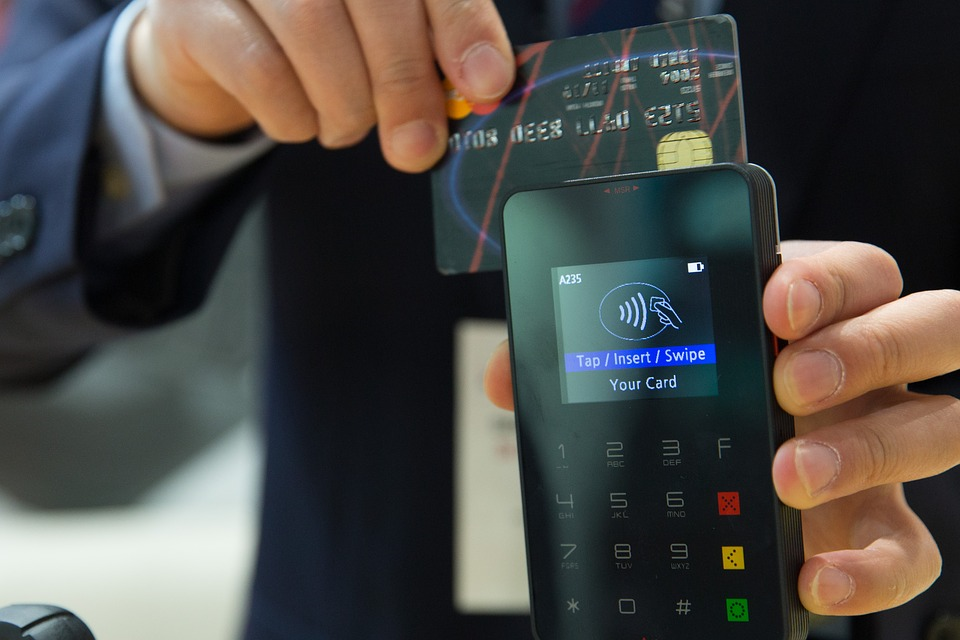In the world of card payments, transactions are classified in two groups: Card Present (CP) and Card Not Present (CNP) Transactions. What are these types of payments? How are they initiated? What are the differences and the risks associated with each type of transaction? This article will answer to these questions. Read on.
The presence of the card is obviously the key to understand CP and CNP transactions. The main question to ask yourself is the following: Present and Not Present for whom? And the answer is very simple: For the merchant. When a merchant can physically see the card that is being used to pay for purchases, it is a CP Transaction. When the merchant cannot see the card, the transaction is considered a CNP transaction.
CARD PRESENT TRANSACTIONS
During a CP transaction, the card and the cardholder (that is obvious :-)) must be present at the merchant location. The merchant can see the card and performs verifications and controls that will otherwise not be possible. There are various ways to initiate a CP Transaction:
- The card is inserted into a chipreading POS Terminal. The cardholder, on the terminal prompt, enters his four to six digit PIN (Personal Identification Number) into the terminal (Chip and PIN) or signs the receipt for the purchase (Chip and signature).
- The card is swiped through a magnetic-card reader, in general the groove of a POS Terminal. The cardholder will sign the receipt for the purchase as well.
- The card is waved in front of a special machine which automatically reads the information. This payment method is used for contactless payments limited to small value sales (less than €30 in SEPA Area, less then £30 in the UK)
- An imprint of the card is captured using a manual machine. This method, that was common in the early days of the card, has almost disappeared.

Since the cardholder is present, the merchant has the ability to verify the transaction personally. He can see the the customer entering his PIN. In case wrong PINs entered many times, the merchant may even keep the card. To check the signature, the merchant can request the customer to provide a driver’s license or identification card where his signature is also present. He can then compare the signature on the receipt with the one on the back of the card and the one on the driver’s license. The merchant is then given immediate proof that the customer is who he claims to be. Furthermore suspicious behavior can be easily detected.
Wee see that CP payment fraud is easier to prevent than CNP payment fraud because the merchant has the opportunity to examine the credit card, as well as the customer’s behavior, for signs of possible fraud.
CARD NOT PRESENT TRANSACTIONS
A CNP transaction occurs any time a purchase is made and the buyer and seller are not physically present in the same place. The cardholder cannot insert or swipe the card. He provides card information to make the purchase:
- The card number printed across the front of the card
- The name of the cardholder as printed or embossed on the card
- The card’s expiration date
- The card security code (CVV or CSV)

CNP Transactions are usually made through Internet websites, telephone or mail subscriptions orders. Accepting payment cards remotely gives the merchant the opportunity to reach far more customers. However the risk for the merchant being victim to fraud is much higher. That is the reason why the issuer charges a lower fee to the merchant for a CP transaction than for a CNP transaction. And the difference can be quite significant.
Two types of Fraud are very common in CNP transactions: Payment Card Fraud and Chargeback Fraud. The first type occurs when fraudsters use stolen (or lost) payment card or card information to make purchases that the cardholder did not authorize. As a result, the cardholder see a debit on his account and request the money to be refunded through dispute and chargeback procedures. In the second type of fraud, the cardholder himself buys and receives a product or service from a merchant, but informs the issuer (his bank) that he never authorized the payment. He initiate a dispute / chargeback to get the money back. What can the merchant do? Not much. In both cases, money is taken back from the merchant’s account.
To reduce the number of CNP payment frauds, many initiatives have been taken by regulators and the card payment industry. Many solutions are available today and some are pretty efficient to combat fraud. We will look at them in a future article. Now that we know what CP and CNP transactions are, it is time to look at what really happens when a card transaction is carried out.





I would like to know if my firm could do large transaction above $1 million Dollars, and how to do such transaction.